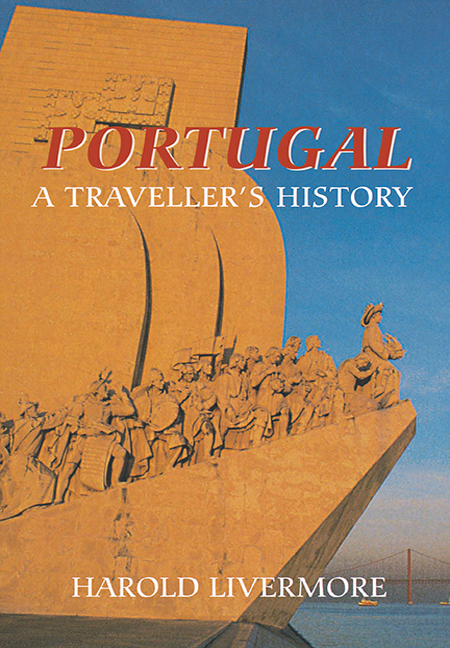Book contents
- Frontmatter
- Contents
- List of Illustrations
- Foreword
- 1 Introduction
- 2 Portugal in History
- 3 Before Portugal
- 4 Islamic Portugal
- 5 Architecture
- 6 Painting
- 7 Music
- 8 Birds
- 9 Fishing
- 10 Portuguese Wines
- 11 Lisbon
- 12 North from Lisbon
- 13 Oporto
- 14 North of Oporto
- 15 Interior Portugal
- 16 Alentejo
- 17 Algarve
- Afterword
- Index
- Frontmatter
- Contents
- List of Illustrations
- Foreword
- 1 Introduction
- 2 Portugal in History
- 3 Before Portugal
- 4 Islamic Portugal
- 5 Architecture
- 6 Painting
- 7 Music
- 8 Birds
- 9 Fishing
- 10 Portuguese Wines
- 11 Lisbon
- 12 North from Lisbon
- 13 Oporto
- 14 North of Oporto
- 15 Interior Portugal
- 16 Alentejo
- 17 Algarve
- Afterword
- Index
Summary
Sacheverell Sitwell, who paid five visits to Portugal, says: ‘in Portugal there are no painters’, adding: ‘what is lacking in Portugal where decorative painting is nearly always bad is the brush of a Tiepolo. There are moments when one longs for even a third-rate Italian painter. But Italy is the land of painting, and Portugal is no more to be reproached for want of that than England, for here too it is no part of our native genius.’ I happen to be writing in the house of J M W Turner, R A and take these remarks for what they are worth. Sitwell is a child of the grand tour with a remarkable gift of reminiscence: everything he sees reminds him of something else. Perhaps Portugal ought to be Mediterranean, but it is not. Sitwell does not (I think) complain that there are no Scottish painters or no Icelandic painters. He loves Portugal, but has manoeuvred himself into being disappointed.
Greco-Roman pictorial art survives in mosaics rather than painting. Both forms were rejected by Islam, and the tradition disappears. Christian Europe inherited the Roman preoccupation with permanence and in the early middle ages preferred stone. Painting emerges between illumination and polychrome figure-sculpture: the former is minute and precise and the latter applies pigments to a stone surface without much subtlety. Early stone figures have little classical line, and the addition of colour does not make them more convincing. By the fourteenth century, the tombs of Alcobaça had acquired great narrative and decorative power, but have not the qualities of painting for which wood and ivory were more suitable. Queen Philippa brought the poems of John Gower to Portugal, but there is no evidence that she brought painting. Royal marriages were at times preceded by the exchange of portraits. In about 1428 van Eyck came to Portugal on a mission to arrange for Philippa's daughter Isabel to marry Duke Philip ‘the Good’ of Flanders. He was perhaps the first acknowledged great painter to visit Portugal. The first known royal portrait is that of Philippa's husband, John I, who died in 1433. There are a dozen manuscripts with miniatures dating from the twelfth-century Book of Birds (Livro das Aves) to the Missal of Lorvão of the fifteenth, with coloured drawings of rural work for each month of the year, a prelude to the art of painting.
- Type
- Chapter
- Information
- Portugal: A Traveller's History , pp. 62 - 65Publisher: Boydell & BrewerPrint publication year: 2004



